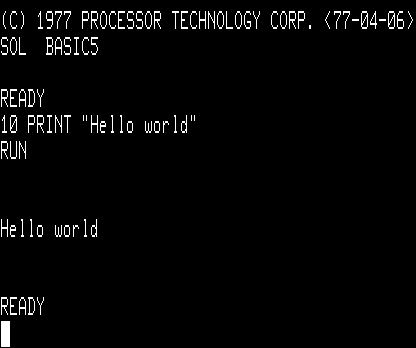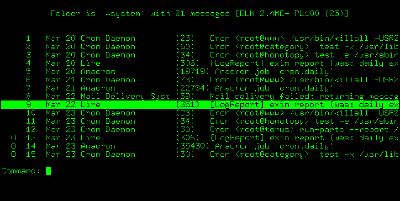One afternoon in 1996, as I worked with my partners at our software startup, the phone rang. I answered it, and a voice on the other end said, “Richard Stallman?”
This was disorienting. Richard Stallman was the legendary technologist who had created the Free Software Foundation, dedicated to freedom from corporate and government control for those who program computers and those who use them. He founded the GNU project, dedicated to creating an alternative to the Unix operating system unencumbered by patents and copyrights. He was famously ensconced in an office at MIT, not a house in a northern California suburb doubling as office space for our startup. Why would someone call us looking for him, there?
Or did the caller think I was Stallman??
The moment was even more baffling because I was then at work (as a side project) on a book about Stallman’s other great creation, Emacs, the text editor beloved by programmers. So there wasn’t no connection between me and Stallman. But he wasn’t involved in my writing project; he had merely invented the thing it was about. That was a pretty slender thread. How do you get from that to expecting to find the great man himself in our humble headquarters?
Three years earlier I did work briefly with Stallman, after a fashion. The GNU project was releasing a new file-compression tool called gzip. Stallman wanted files compressed by gzip to have names ending with “.z”. In an e-mail debate with him, I argued that this would make them too easy to confuse with files created by “compress,” a predecessor to gzip, which used a “.Z” filename suffix. The distinction between uppercase “.Z” and lowercase “.z” would be lost if those files were ever stored on, or passed along by, an MS-DOS computer, which permitted only monocase filenames. Stallman, in his typical mulish way, refused to allow any consideration of how Microsoft software behaves to influence what the GNU project should do. But I was insistent, not least because I believed that the potential for confusion would harm the reputation of the GNU project, and I wanted GNU to succeed. I was on Stallman’s side! I was joined in my opinion by a couple of others on that thread. In the end Stallman relented, and as a result gzip used (and still uses) the filename suffix “.gz”.
This was a rare concession from a man whose primary goal with the Free Software Foundation was the repudiation, on principle, of the entire edifice of intellectual property law. The creation of actually useful software was only ever secondary to that goal.1 To the extent that Microsoft owed its existence to intellectual-property plunder, Stallman would have seen it as a moral obligation not to allow it to affect the design of GNU gzip.
Stallman was never one to allow pragmatism to overcome principle, an outlook that extended far beyond his professional pursuits and into all aspects of his public persona, with results often off-putting and occasionally problematic. In principle, why should anyone object to an impromptu solo folk dance in the middle of a fancy restaurant (as recounted in Steven Levy’s recent Wired article)? No one should, of course — in principle. In practice, most of us would agree there are good reasons to keep your spontaneous folk-dancing inhibitions in place. But Stallman is not most of us. In principle, it’s merely being intellectually honest to engage in a little devil’s-advocate hypothesizing on the Jeffery Epstein scandal, and how Stallman’s colleague Marvin Minsky might have been involved. In practice, for a prominent public figure — one with authority over others — to do so at this moment, and in that way, betrays at best a cluelessness that’s just this side of criminal. It’s what forced Stallman to resign recently from the organization he’s led for over three decades.
But in 1996, when the phone rang at my startup, Stallman was, to me and my colleagues, simply a legendary hero hacker and fighter against oppression. When I said, “Hello?” and the voice on the other end said, “Richard Stallman?” the effect on me wouldn’t have been too different if it had said, “Batman?”
I stammered something along the lines of, sorry, this is Zanshin, in California; Richard Stallman works at the Massachusetts Institute of Technology. The voice said, “No, this is Richard Stallman.” What I had taken for a question mark was really a period. (Or possibly an exclamation point.)
In principle, it makes perfect sense to shorten, “Hello, this is Richard Stallman” to “Richard Stallman.” Those four other syllables seem superfluous; might as well save the effort it takes to utter them. In practice, of course, it is decidedly odd when placing a phone call simply to declare your own identity and expect your intention to be understood, especially when you leave off anything like, “May I speak to Bob Glickstein please?”
Stallman was calling me, it turns out, because of the book I was writing. He wanted to know if I would consent to giving the book away for free. (A few years later Stallman would put the same pressure on his biographer, Sam Williams, as recounted in the Salon.com review of Williams’ book.) I said that I was not unsympathetic to his request — after all, Emacs, the topic of my book and the output of many programmer-hours of labor, was distributed for free by the FSF. But how could I consent, when my publisher had production and marketing costs to recover? What about the value of all the time I had invested, couldn’t I reasonably expect some compensation for that, especially since I was not yet drawing any salary from my startup? I additionally thought, but did not say out loud, that unlike Stallman himself I had not earned a MacArthur genius grant to fund my writing and programming whims.
Stallman had no answer for the questions I posed, other than to reiterate a few times his certainty that the book should by rights be free. We ended our call, and (as it turned out) our professional association, at a stalemate on this topic.
As with the gzip episode, I was nominally on Stallman’s side. I would have given serious consideration to his request if he could have compromised somehow, or if he could have spoken about the prospects for earning revenue from a product even when it’s given away for free, or, hell, if he could simply have articulated some understanding of or sympathy for the objections I raised. But he was doctrinaire. The principle was the one and only consideration for him.
The paradox of Richard Stallman is that this single-mindedness made him remarkable and allowed him to achieve remarkable things; but his disregard for pragmatism in favor of an insistence on principle cost him the goal of freely distributing my book, on this occasion — and, on another occasion twenty-odd years later, also cost him his career.
- Ironically it’s that secondary goal at which the FSF has been more successful by far (despite the many who have rallied to Stallman’s anti-copyright banner — myself included, with varying degrees of conviction over the years). Intellectual property law is as constraining to individuals and organizations as ever. But you and I and everyone we know and, not to put too fine a point on it, our entire modern information economy, depend daily on infrastructural software created by the FSF. [↩]
 Well, guess what? Kill Ralphie! lives again! I’ve taken that old pastime and turned it into a fun new website. Please check it out, contribute chapters, and enjoy:
Well, guess what? Kill Ralphie! lives again! I’ve taken that old pastime and turned it into a fun new website. Please check it out, contribute chapters, and enjoy:  As a junior, late in 1982, a few friends and I felt the urge to write and perform a collection of short one-act plays. With faculty help we ended up founding The Brick Prison Playhouse (so called because the school’s appearance earned it the affectionate nickname “the brick prison”), a repertory group for performing student-written plays, as opposed to the existing repertory groups that performed established plays and musicals.
As a junior, late in 1982, a few friends and I felt the urge to write and perform a collection of short one-act plays. With faculty help we ended up founding The Brick Prison Playhouse (so called because the school’s appearance earned it the affectionate nickname “the brick prison”), a repertory group for performing student-written plays, as opposed to the existing repertory groups that performed established plays and musicals.


